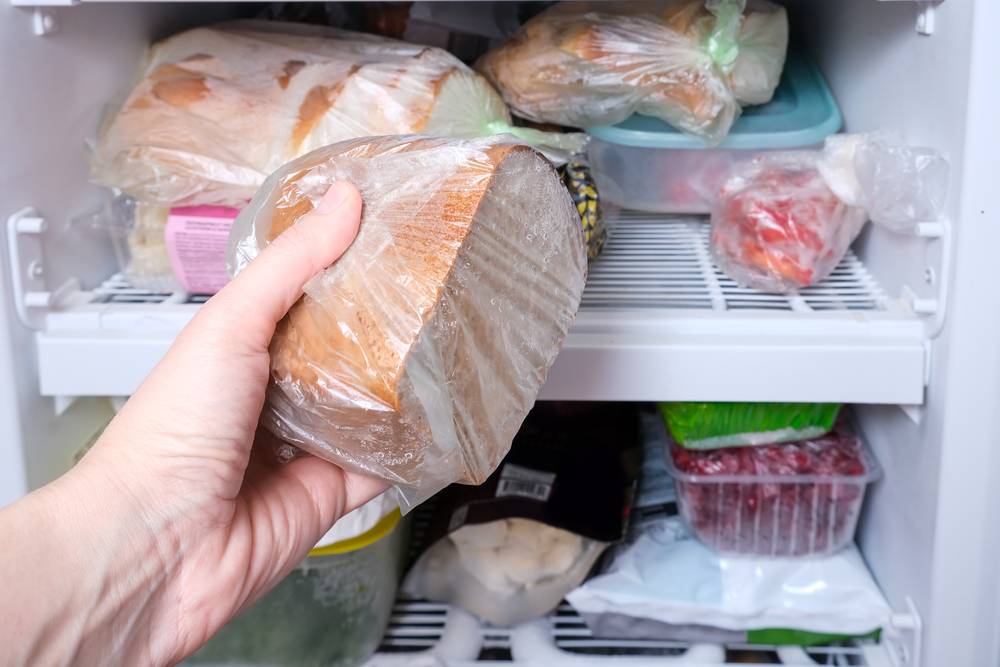Bread lovers, rejoice! TikTok has delivered yet another life-changing hack, and this one involves your freezer.
Health professionals all over the app are claiming that freezing bread lowers its glycaemic index. Yes, you heard that right—your morning toast might just get a health upgrade by spending a little time on ice.
But does freezing bread really lower its glycaemic index, or is this just another half-baked idea? As it turns out, science has stepped in with a solid “yes.” Researchers have found that freezing alters the starches in bread, making them less digestible and better for your blood sugar. So, how does this frosty trick actually work, and why are people calling it a health game-changer?
Let’s dig into the data.
@thefastingmd Can you freeze our the (unhealthy) carbs in bread? The science mind blowing and I’ve noticed that many people I’ve talked to have checked their blood sugars and they are at least 30% lower with frozen and toasted bread This is a great strategy if you want to have your occasional toast or bagel. This works for wheat bread, potatoes, pasta, and rice as well. Science to save ourselves! 🙌 #b#breadf#freezingbreadn#nutritionc#carbsh#healthyf#fypb#bloodsugar ♬ original sound – Dr. Amy Shah
Freeze Your Bread for Healthier Toast? Dr Amy Shah Explains Why
Dr Amy Shah, a physician and nutrition expert, shared in a TikTok video how freezing bread can enhance its health benefits:
“What is happening overnight is that the starch is breaking down and becoming resistant starch. That resistant starch is the healthy starch that feeds your gut bacteria,”
More on TikTok: Do These Viral TikTok Health Hacks Hold Up to Medical Scrutiny?
How Freezing Affects Bread’s Glycaemic Index
The glycaemic index (GI) is a ranking system for carbohydrates, measuring how quickly they raise blood glucose levels after eating. Foods are scored on a scale of 0 to 100, with pure glucose assigned a GI of 100. High-GI foods, like white bread (often scoring around 70 or higher), cause rapid spikes in blood sugar. In contrast, low-GI foods (55 or below) release glucose more gradually, offering better blood sugar control.

Freezing bread induces a process called retrogradation. During this process, the starch molecules in bread reorganise into a structure that is more resistant to digestion. This transformation increases the proportion of resistant starch, a type of carbohydrate that slows glucose absorption into the bloodstream.
One study showed that freezing, thawing, and toasting white bread significantly reduced its impact on blood sugar. The measurement of its blood sugar response dropped from 259 to 157—a 39% reduction.
“Not only are you reducing the glycaemic index by 30%, you’re also feeding your good gut bacteria,” says Dr Shah.
Health Benefits of Lowering Bread’s Glycaemic Index
Freezing bread to lower its GI has several health advantages beyond controlling blood sugar. Studies highlight its role in improving metabolic health, supporting digestion, and promoting long-term well-being. Here’s how:
- Better Blood Sugar Control: Lower-GI foods help regulate glucose release into the bloodstream.
- Improved Gut Health: Resistant starch, formed during freezing, acts as a prebiotic. It feeds beneficial gut bacteria, which can improve digestion and enhance immune function.
- Stable Energy Levels: Foods with a lower GI, like frozen bread, provide a steady release of glucose. This can help reduce energy dips and prolong satiety.
- Chronic Disease Prevention: Consuming more resistant starch is associated with lower risks of heart disease and improved colon health.
- Weight Management: Slow-digesting carbohydrates help you stay full longer, potentially reducing overall calorie intake.
“When you want your occasional toast, or you’re feeding it to your family, freeze it overnight and toast it to improve its health benefits,” suggests Dr Shah.
Read more: TikTok’s ‘Girl Dinner’ Trend: Healthy or Risky? Exploring the Impact
How to Use Freezing to Lower Bread’s Glycaemic Index
If you’re ready to give this bread hack a try, here’s how you can maximise the benefits of freezing:
- Freeze for Optimal Results: Place bread in an airtight bag or container to prevent freezer burn. Studies suggest freezing for at least one week achieves a significant reduction in glycaemic response.
- Combine with Toasting: For the best results, freeze the bread, let it thaw, and toast it before eating. Research shows this combination provides the greatest reduction in glycaemic impact
- Choose the Right Bread: Wholegrain or seeded bread offers additional fibre, which further slows digestion and helps lower overall glycaemic response.
- Pair Wisely: Pair frozen and toasted bread with fibre-rich toppings like avocado, hummus, or vegetables. This adds nutrients and keeps glucose absorption slower.
These simple changes make a big difference for anyone looking to better manage blood sugar levels. Whether you’re trying to eat healthier or just curious about the science, freezing bread is an easy, practical way to upgrade your daily diet.

